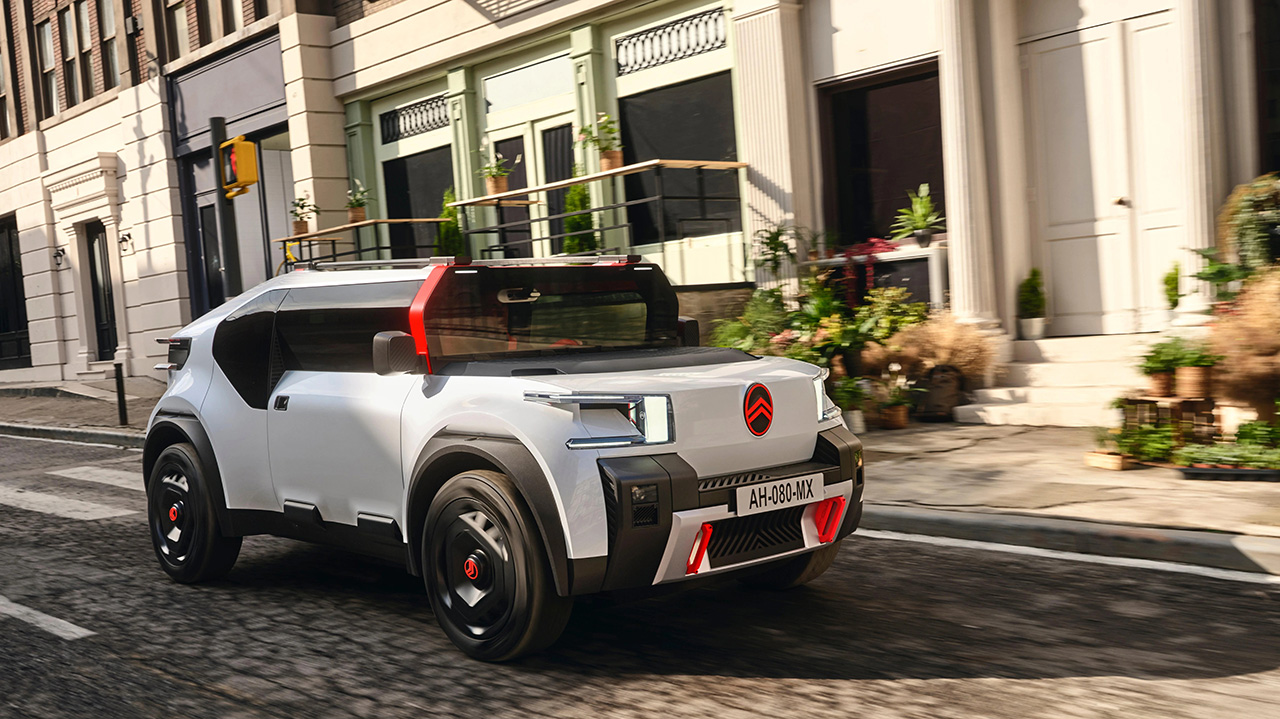The Oli - pronounced "all-e" - is said to outline the brand's ambitions to reduce its environmental impact at every stage of a car's life cycle. The bonnet, roof, and pick-up tub panels of the Citroen Oli are comprised of recycled cardboard produced by German chemicals firm BASF, which has a honeycomb pattern and is reinforced with fibreglass.
Citroën's cardboard-based panels are strong enough for an adult to stand on, despite weighing half as much as equivalent steel panels. The Citroen Oli is about the size of a compact hatchback, but it's as tall as a larger SUV.
The Citroën Oil was created to be driven in the city rather than on highways, as it can only go up to 110 km/h (68 mph). Additionally, the aerodynamics were not a priority for this design - as seen with its vertical windscreen.
The Citroën Oli has a load bed of 994 mm width and can expand from 679 mm to 1050 mm in length, and 330 mm to 582 mm in height. The Oli's doors are stripped of speakers and sound deadening, which lowers weight by approximately seven kg on each side.
The Citroën Oli's dashboard includes detachable Bluetooth speakers and a smartphone dock, allowing riders to bring their own phones. The Oli's seats, for example, are constructed of 80 percent fewer pieces than a regular SUV's, from 37 to just eight.
Citroën claims the glass is lighter and less expensive to produce than traditional curved windscreens due to its smaller size. The cabin is also less likely to heat up due to its reduced demand on the air-conditioning system, saving up to a claimed 17 per cent of the battery's power.
What did Citroën's crash diet accomplish? A concentrated weight of 1000 kg, or almost twice the 2.4m-long Ami's 485 kg kerb weight but around 600kg lighter than the 4.7m-long Tesla Model 3.
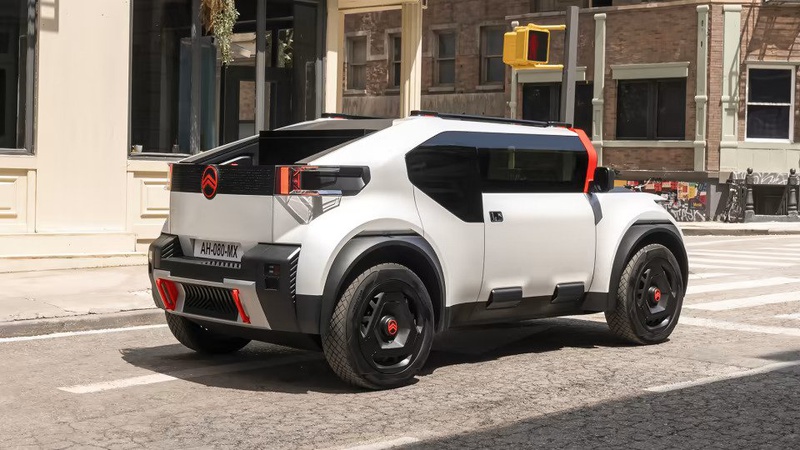
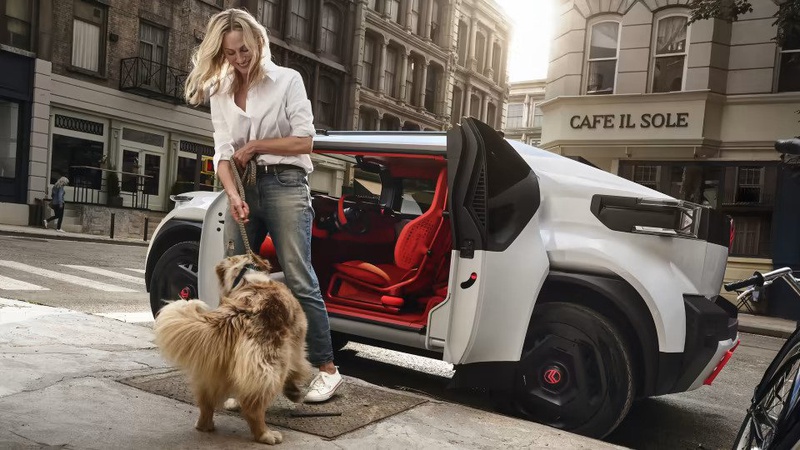

Citroën Oli Concept
Citroën Oli can travel up to 400 km (248 miles) on a single charge, and its 40 kWh battery can be charged from 20% to 80% in just 23 minutes using a DC fast charger. Vehicle-to-load technology allows the Citroen Oli's battery pack and 3.6kW power socket to power an external 3000 W electrical device for up to 12 hours, so you can keep your devices juiced up on long road trips.
The vehicle's steel and aluminum rims are fitted with bespoke Goodyear Eagle 'GO' tires, which are constructed of environmentally friendly and recycled materials. Goodyear states that their concept tyres can last for 500,000 kilometres on the road before they need to be changed - which is more than 10 times the average amount of time most cars recommended.

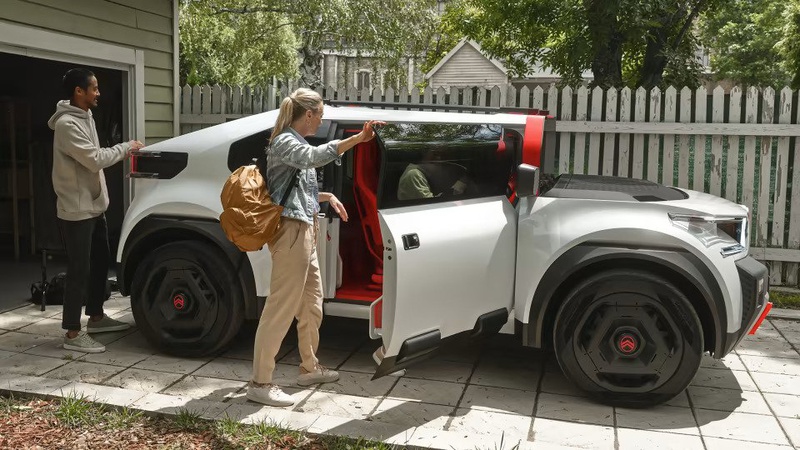
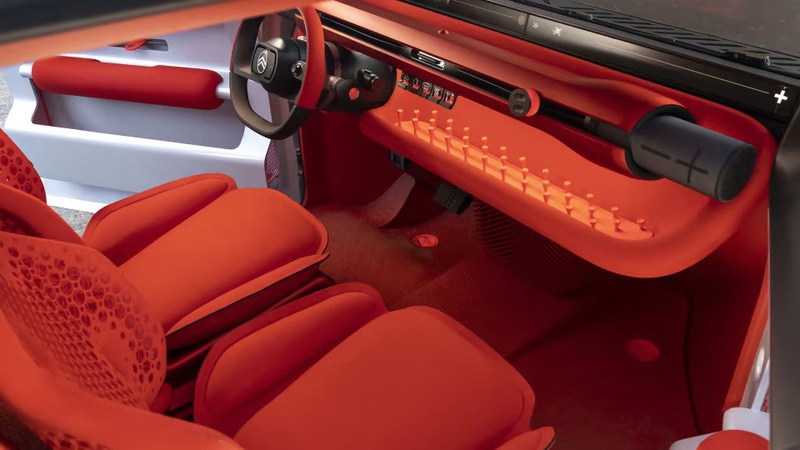
Citroën Oli Concept
As reported earlier, the Citroën brand plans to go fully electric in Europe by 2030, and currently offers five electric cars in its global model line-up - the e-C4, e-C4 X, Ami, e-Spacetourer and e-Berlingo. The Citroen Oli has not yet been confirmed for production.
Source: Citroën
